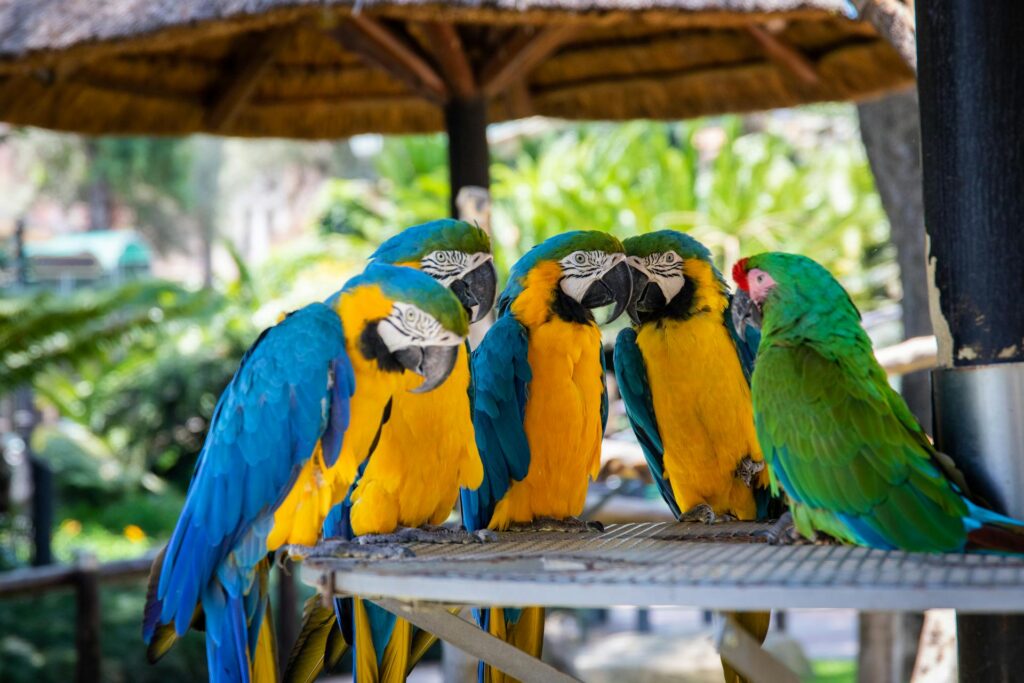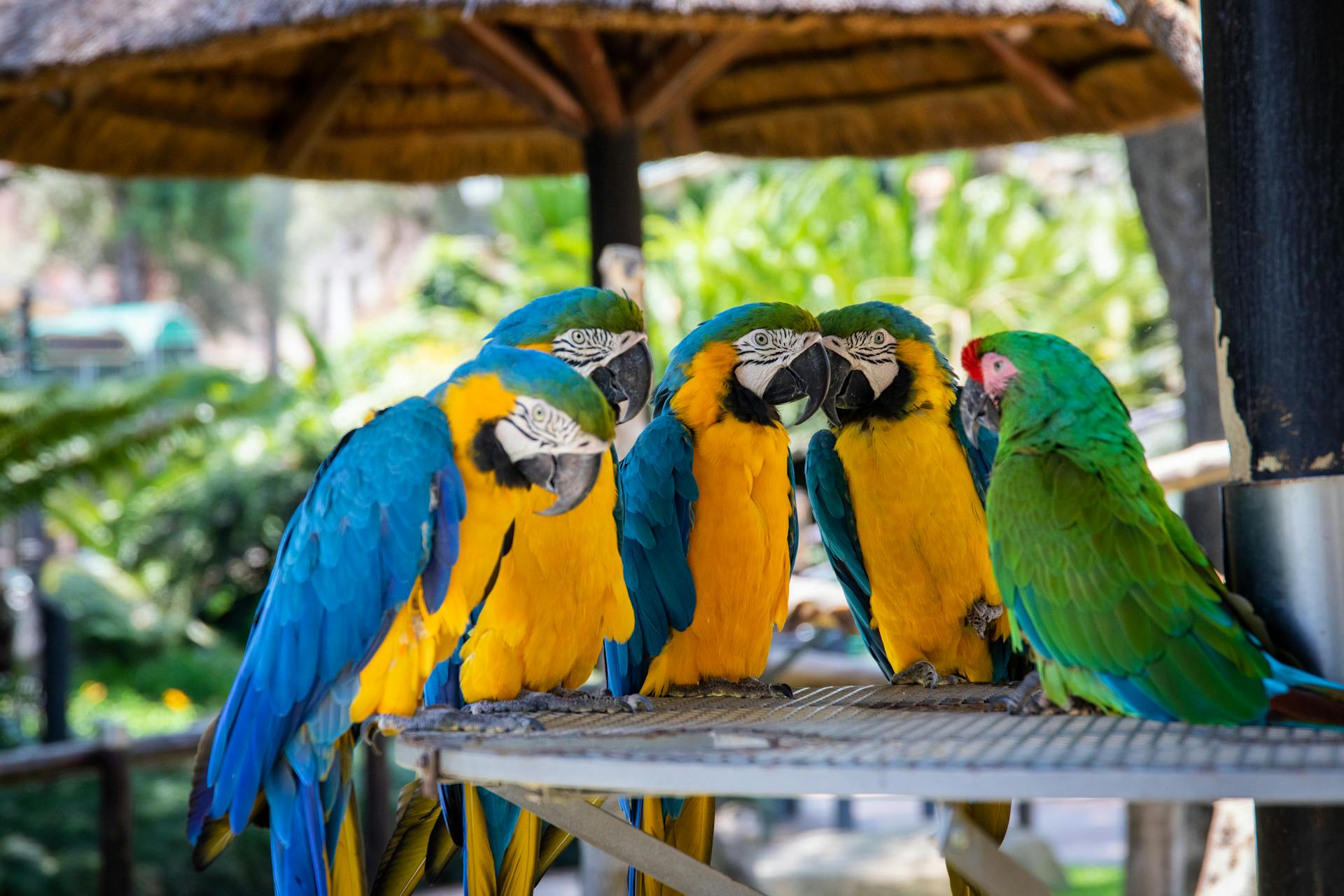Introduction
The world of avian enthusiasts is brimming with diverse and colorful options, and the lineolated parakeet stands as a prime example of nature’s creativity. These charming birds, often referred to as “linnies,” have gained immense popularity in recent years. In this article, we will delve into the captivating world of lineolated parakeets, exploring their origin, appearance, behavior, care requirements, and much more.
The Origin Story
A Feathered History
The lineolated parakeet, scientifically known as “Bolborhynchus lineola,” hails from the lush forests of Central and South America. Native to countries like Mexico, Honduras, and Venezuela, these birds have a rich history in their natural habitat.
Arrival in Aviculture
Linnies made their debut in the aviculture scene during the 20th century. Their small size, gentle nature, and striking colors quickly caught the attention of bird enthusiasts, leading to their introduction to the pet trade.
A Rainbow of Colors
Vibrant Plumage
One of the most captivating aspects of lineolated parakeets is their stunning plumage. These birds come in a wide range of colors, including vibrant greens, cobalt blues, bright yellows, and even cinnamon browns. The combination of these colors creates a mesmerizing tapestry of feathers that can instantly brighten up any aviary.
Feather Varieties
Linnies showcase various feather mutations, such as pied, dark factor, and turquoise. These mutations add to their visual appeal, making them even more sought after among bird enthusiasts.
Personality Traits
Gentle and Sociable
Lineolated parakeets are renowned for their friendly and sociable nature. They tend to form strong bonds with their human companions, often becoming affectionate pets. Unlike some parrot species, linnies are not known for being loud, making them ideal for apartment living.
Playful and Inquisitive
These birds have an innate sense of curiosity. They love exploring their surroundings and playing with toys, which can provide hours of entertainment for both the birds and their owners.
Care Requirements
Housing and Cage Setup
When bringing a lineolated parakeet into your home, it’s crucial to provide them with a spacious and well-equipped cage. Ensure it has enough room for them to stretch their wings and move about freely. Adding perches, toys, and nesting boxes will keep them happy and engaged.
Nutrition
A balanced diet is essential for the health of your linnie. They thrive on a mix of high-quality pellets, fresh fruits, and vegetables. There should always be access to fresh water.
Social Interaction
Linnies thrive on social interaction. Spending quality time with your bird, talking to them, and providing mental stimulation is key to their well-being.
Breeding and Reproduction
Pairing and Nesting
Breeding linnies can be a rewarding experience for avian enthusiasts. These birds form monogamous pairs and are known to be excellent parents. Providing a suitable nesting box and proper nutrition during this time is essential for successful breeding.
Raising Chicks
Linnie chicks are adorable and require attentive care. Ensuring a warm and safe environment for the chicks is crucial, and a proper diet is essential for their growth.
The Enigmatic Lineolated Parakeet: A Colorful Addition to Your Avian World
Dietary Needs
A Balanced Diet
Proper nutrition is vital for the health and longevity of your lineolated parakeet. To ensure their well-being, offer a balanced diet that includes high-quality pellets, fresh fruits, and vegetables. Avoid feeding them avocado, chocolate, caffeine, and high-fat or sugary foods, as these can be harmful to their health.
Hydration
Fresh and clean water should always be available to your linnie. Replace the water daily to prevent bacterial growth, and consider providing a shallow dish for them to bathe in, as many linnies enjoy splashing around in water.
Exercise and Mental Stimulation
Physical Activity
Linnies are active birds that require regular exercise. Provide them with plenty of opportunities to fly and move around outside their cage. A safe and bird-proofed room can serve as an excellent play area.
Toys and Enrichment
Keep your lineolated parakeet mentally stimulated by offering a variety of toys and puzzles. Toys that encourage foraging and problem-solving can be particularly engaging for these intelligent birds.
Health and Veterinary Care
Regular Check-ups
To ensure the long-term health of your lineolated parakeet, schedule regular check-ups with an avian veterinarian. Routine examinations can help detect and address any health issues early on.
Signs of Illness
Be attentive to any changes in your linnie’s behavior, as this can be an indicator of illness. Common signs of illness in birds include changes in appetite, lethargy, difficulty breathing, or unusual droppings. Seek immediate veterinarian assistance if you observe any of these symptoms.

Enigmatic Lineolated Parakeet
Interaction and Socialization
Building Trust
Building a strong bond with your lineolated parakeet requires patience and consistency. Spend time talking to and interacting with your bird daily to foster trust and companionship.
Teaching Tricks
Linnies are quick learners and can be taught tricks with positive reinforcement. Training sessions not only provide mental stimulation but also strengthen your bond with your feathered friend.
Exploring Lineolated Parakeet Varieties
Color Mutations
Pied Linnies
Pied linnies exhibit a captivating mix of colors, with patches of white or light-colored feathers intermingled with their base color. This unique mutation creates a striking contrast, making each bird visually distinct.
Dark Factor Linnies
The dark factor mutation results in linnies with deeper, richer hues. Their feathers have a velvety appearance due to increased pigmentation, giving them a dramatic and elegant look.
Turquoise Linnies
Turquoise linnies showcase a beautiful aqua-blue shade in their plumage. This color mutation is highly sought after by avian enthusiasts for its enchanting and calming appearance.
Caring for Different Varieties
Each variety of lineolated parakeet may have specific care requirements and considerations. For instance, dark factor linnies might require slightly dimmer lighting to showcase their rich colors effectively, while pied linnies might benefit from additional grooming due to their white patches.
Finding Your Lineolated Parakeet
Adoption vs. Purchase
When considering bringing a lineolated parakeet into your home, you have the option to adopt from a rescue organization or purchase from a reputable breeder. Both choices have their advantages, so research thoroughly and choose the one that aligns with your values and circumstances.
Healthy Selection
Regardless of where you acquire your linnie, ensure you choose a healthy bird. Look for signs of alertness, good feather condition, and a clean vent area. If possible, ask for health records and consult with a veterinarian before finalizing your decision.
The Joy of Avian Companionship
Bonding with Your Linnie
Building a strong bond with your lineolated parakeet can be a deeply rewarding experience. Spend time with your bird daily, offering gentle interaction and positive reinforcement. Over time, your linnie will come to trust and adore you.
The Sounds of Happiness
While linnies may not be chatterboxes like some parrot species, they communicate through melodious chirps and whistles. Learn to recognize their unique vocalizations, as this will deepen your connection and understanding of your feathered friend.
The Lineolated Parakeet’s Natural Habitat
Native Range
Lineolated parakeets are native to the lush forests and mountainous regions of Central and South America. They can be found in countries such as Mexico, Honduras, Venezuela, and parts of Colombia. Their natural habitat is characterized by dense vegetation, making them skilled fliers and adept at navigating through foliage.
Social Behavior
In the wild, these birds are social creatures and often gather in small flocks or family groups. Their social structure revolves around strong bonds within these groups, where they communicate through their distinct vocalizations.
Diet in the Wild
Lineolated parakeets primarily feed on a diet of various seeds, berries, fruits, and vegetation found in their natural habitat. Observing their wild diet can provide valuable insights into their dietary preferences in captivity.
Breeding in the Wild
Nesting Habits
In their natural habitat, linnies build their nests in tree cavities, crevices, and hollow branches. They are known for their resourcefulness in finding suitable nesting sites and often choose locations that offer protection from predators.
Mating Rituals
During the breeding season, male lineolated parakeets display courtship behaviors such as preening, feeding, and vocalizing to attract females. Once a pair forms a bond, they work together to prepare the nesting site and raise their young.
Conservation Status
Threats to their Habitat
Like many other avian species, lineolated parakeets face habitat loss due to deforestation and urban development. This destruction of their natural environment poses a threat to their survival in the wild.
Captive Breeding and Conservation Efforts
To help preserve the species, some organizations and aviculturists participate in captive breeding programs. These programs aim to ensure a genetically diverse population of lineolated parakeets, which may someday contribute to the conservation of their wild counterparts.
Bringing Conservation Home
Responsible Ownership
As a lineolated parakeet owner, you can play a role in conservation by being a responsible pet owner. Ensure that your bird’s needs are met and consider supporting organizations dedicated to the protection of parrot species in the wild.
Education and Awareness
Promoting awareness about the lineolated parakeet’s natural habitat and the challenges it faces can inspire others to take action in conservation efforts. Share your knowledge with fellow avian enthusiasts and advocate for the preservation of their native habitats.
Conclusion
In your journey of caring for a lineolated parakeet, understanding their origins and natural behaviors can deepen your appreciation for these captivating birds. Whether you choose to bring one into your home or support their conservation efforts, you’ll be contributing to the protection of a species that adds vibrancy and charm to the avian world.
FAQs (Frequently Asked Questions)
- Do lineolated parakeets talk like some other parrot species? No, linnies are not known for their talking abilities. They typically communicate through soft, melodic chirps and whistles.
- What is the lifespan of a lineolated parakeet? With proper care, lineolated parakeets can live for 10 to 15 years or more in captivity.
- Can I keep a single lineolated parakeet, or do they need a companion? While they can be kept alone, linnies thrive in pairs or small groups and are generally happier with a companion.
- Are lineolated parakeets easy to train? Yes, these birds are known for their intelligence and can be trained with patience and positive reinforcement.
- Do linnies require any specific veterinary care? Regular check-ups with an avian veterinarian are recommended to ensure their health and well-being.
